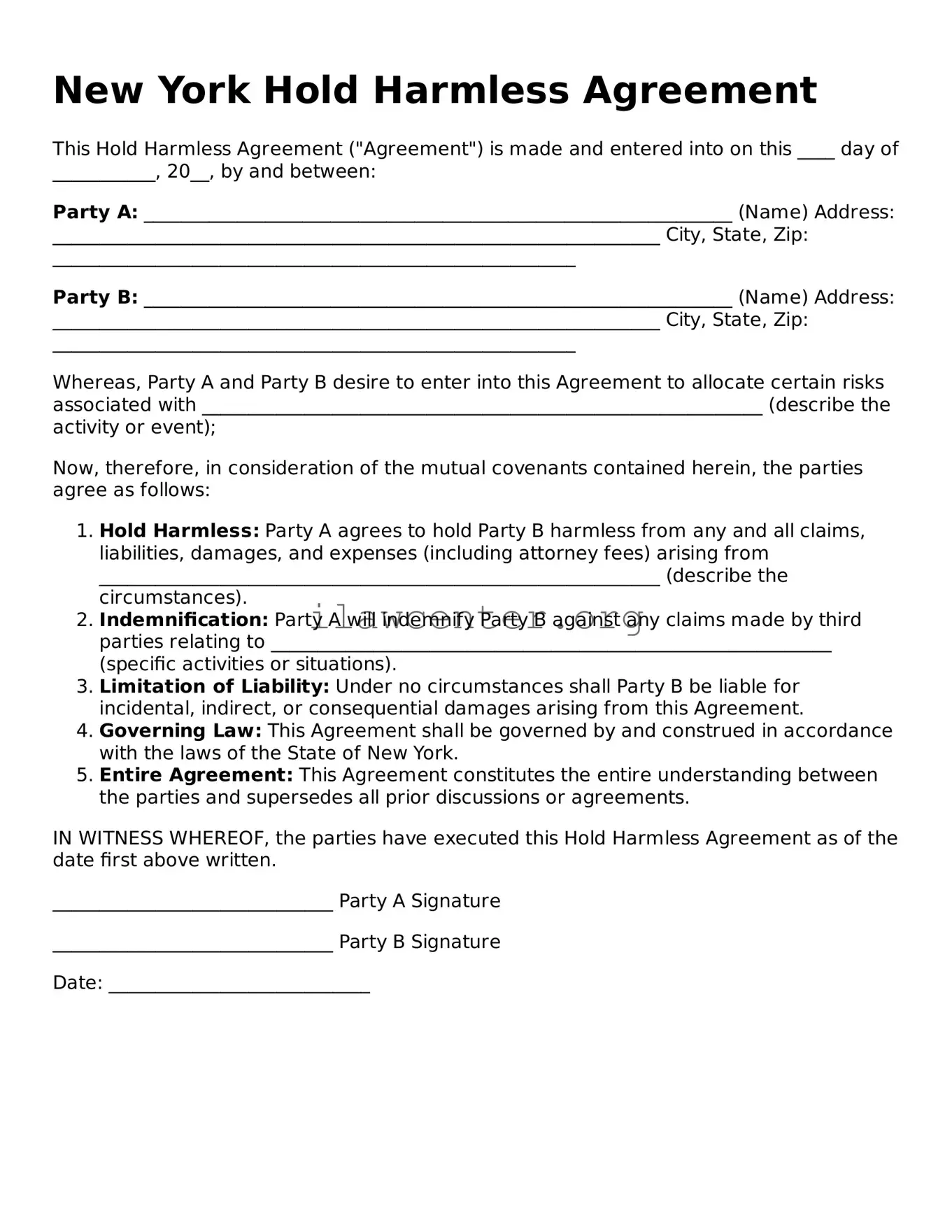Instructions on Utilizing New York Hold Harmless Agreement
After obtaining the New York Hold Harmless Agreement form, you will need to carefully fill it out to ensure that all information is accurate and complete. This process involves providing specific details about the parties involved and other pertinent information. Once the form is filled out, it will need to be signed and possibly witnessed, depending on the requirements of your specific situation.
- Begin by reading the entire form to understand its purpose and requirements.
- Locate the section where you need to insert your name or the name of your organization. Write it in the designated space.
- In the following section, fill in the address associated with your organization or your personal address if you are an individual.
- Next, look for the area to enter the name of the other party or parties involved. Ensure their names are printed clearly.
- Fill in the addresses of the other party or parties in the specified section.
- Provide details about the activity, event, or service related to the agreement. Be as detailed as possible to avoid ambiguity.
- If there is a specific term or duration associated with the agreement, indicate that in the appropriate field.
- Read any additional clauses or statements carefully. You may need to initial or sign next to these sections to indicate your understanding and acceptance.
- Review the entire document to check for any missing information or errors.
- Once everything is complete, sign the form in the designated signature area.
- Date the form appropriately to indicate when it was signed.
- If required, have a witness sign the document, and make sure to fill in their information as specified.
After completing these steps, you will have a properly filled New York Hold Harmless Agreement form ready for submission or distribution as needed. Ensure that you keep a copy for your records for future reference.
